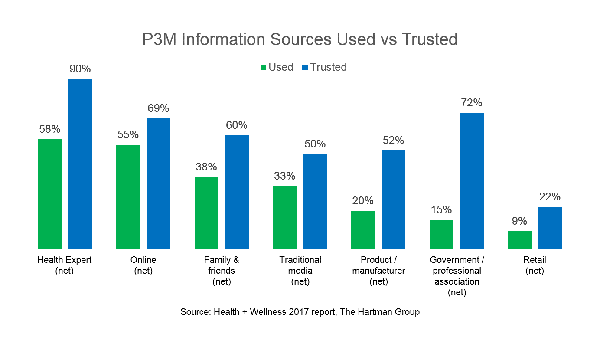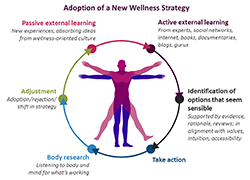In the Pursuit of Health and Wellness Knowledge: A New Source of Information
 A critical element of wellness behavior and a very necessary component of wellness education is the pursuit of knowledge. Much like a packaged food, knowledge is information that has been skillfully harvested, carefully processed and properly stored for consumption at a later time. Knowledge is the transformation of information to understanding, and it serves as a decisive tool for consumers as they explore new avenues of health and wellness in an increasingly complex world saturated with new products, alternative treatments, fad diets and conflicting information about what is healthy.
A critical element of wellness behavior and a very necessary component of wellness education is the pursuit of knowledge. Much like a packaged food, knowledge is information that has been skillfully harvested, carefully processed and properly stored for consumption at a later time. Knowledge is the transformation of information to understanding, and it serves as a decisive tool for consumers as they explore new avenues of health and wellness in an increasingly complex world saturated with new products, alternative treatments, fad diets and conflicting information about what is healthy.
Information in and of itself does not have a meaningful influence on consumer behavior. Knowledge is what moves the dial, and information that can’t be trusted or understood by the consumer will never get transformed into knowledge.
While most consumers want to know more regarding wellness products and services, it’s those at or near the core of the wellness world who possess the greatest desire to gain knowledge and, therefore, are the most active in seeking out wellness information. Core consumers seek to learn through any means possible and are willing to take a few risks along the way as part of the discovery experience.
The pursuit of knowledge is an ongoing journey taken by all consumers (from the periphery to the core) and, not unlike other consumer behaviors/values that change over time, it assumes a new level of significance as the wellness consumer evolves and migrates closer to the core.
This inward migration happens faster for some than for others and can be influenced by a variety of factors, including how effectively one adapts to circumstantial and/or environmental changes.
Oftentimes reaching a certain age or stage in one’s life will bring with it self-reflection and a new focus on health, which places a greater priority on wellness education. Sometimes it is simple curiosity that can lead consumers to a heightened awareness of wellness and the pursuit of wellness knowledge.
Others, in good health or perhaps just less inquisitive in nature, may choose to behave more passively in their pursuit of wellness knowledge. Finally, there are those left without choice at all who experience life events (e.g., challenged with a sudden health condition) that trigger permanent changes in lifestyle, requiring of them a more proactive, intensive or focused effort to build knowledge around products and activities.
Information Sources: Usage vs Trust
According to our Health + Wellness 2017 report, for consumers seeking information on wellness, the most prominent sources are health experts, online, family and friends, and traditional media. While consumers turn first to experts and the internet to help them learn more about health and wellness, they also generally regard the medical profession/health expert as the most trusted source of health and wellness information.
Despite the clear increase in access to health and wellness information over the past several years, consumers do not appear to be using more sources of information. The average number of sources used has remained essentially around 3 (mean of 3.3 in 2017). Core consumers use at least 4 sources while periphery consumers use only 2.5 sources.
Consumers are increasingly feeling that all forms of advice are just that – advice – until they have tested it for themselves. This means there are few universal rights or wrongs in wellness, because everyone has their own set of unique physical and mental needs based on their genetics, their social and environmental context and their personalities. This mentality contributes to the appeal of social networks and other “people like me” for advice.
Adoption of a New Health and Wellness Information Source
As more consumers privilege ideas around personalized wellness, “body research” comes to the fore as a way to assess the value of health and wellness behaviors.
Consumers seeking to improve their health and wellness are increasingly turning to their own bodies for information on which wellness strategies work for them, sometimes regardless of the strategy’s source. Adopting a new wellness behavior entails a period of self-testing, where consumers try to “listen to the body” and assess positive or negative impact.
The emphasis on personalization places more responsibility on individuals to do their own “health work” and increases their need for support. These shifts in Health + Wellness are reinforcing a culture already characterized by individualism and belief in personal (rather than collective) responsibility for health.
This need for support represents an opportunity for manufacturers, retailers and food service providers to help consumers find a new path to wellness.
The wellness journey continues: Health + Wellness 2019! To learn more, download study overview and order form: H+W 2019


